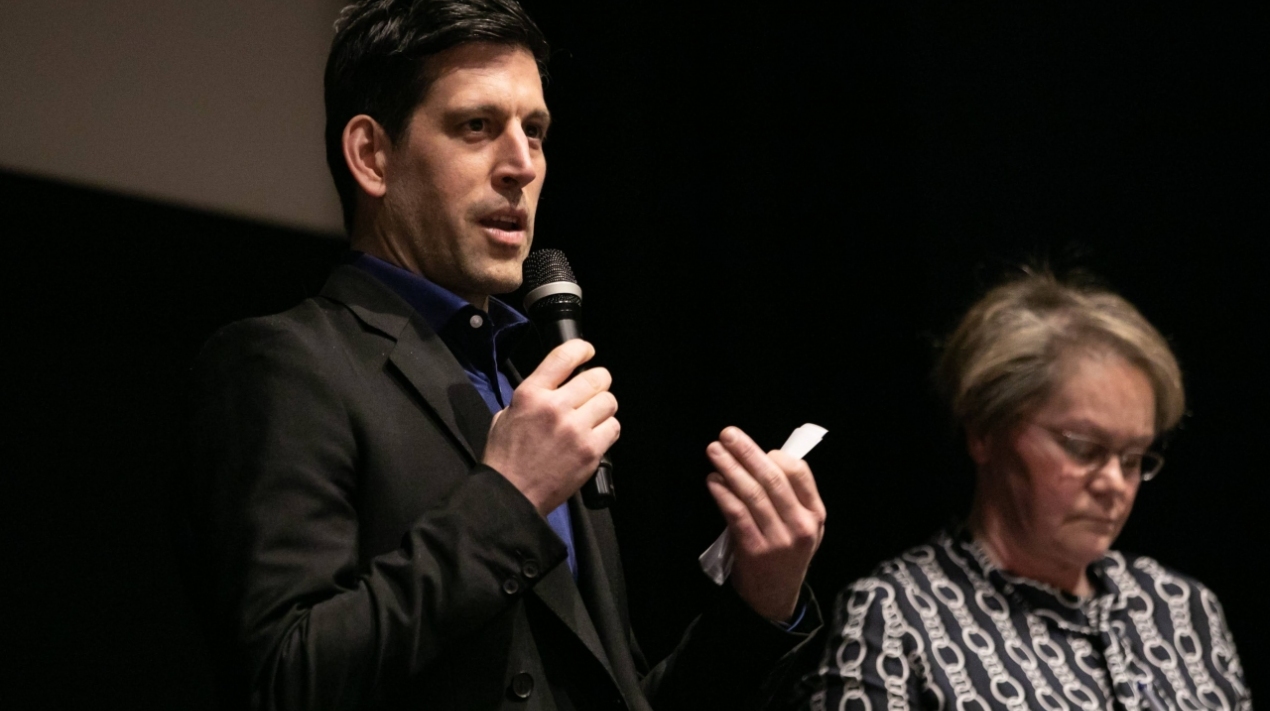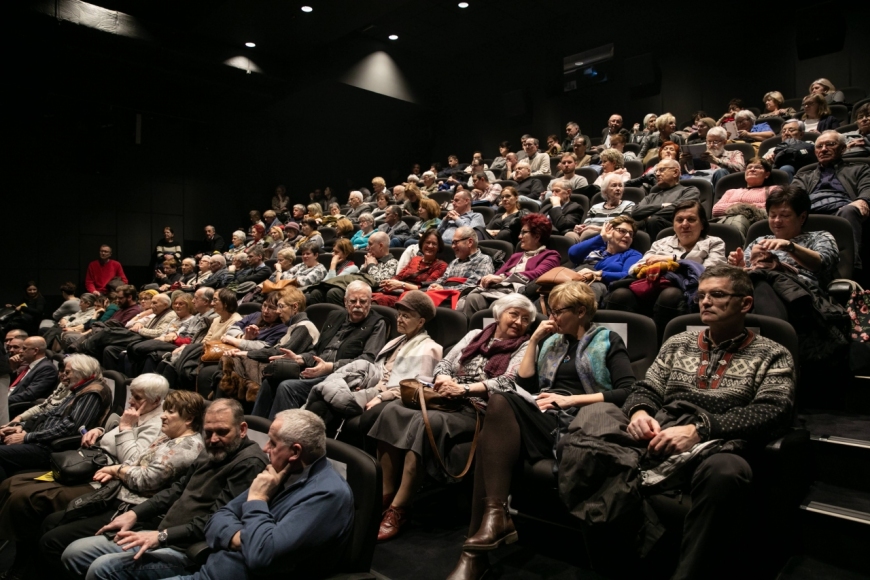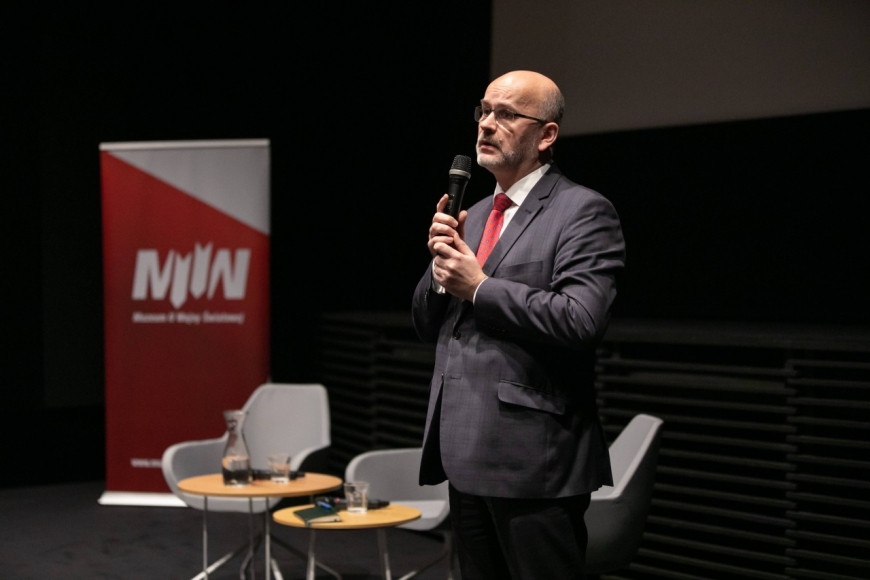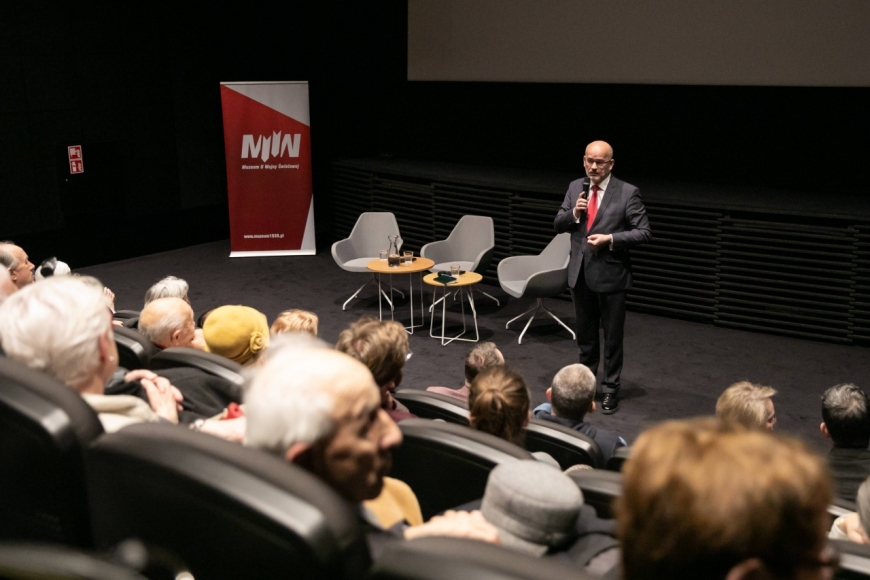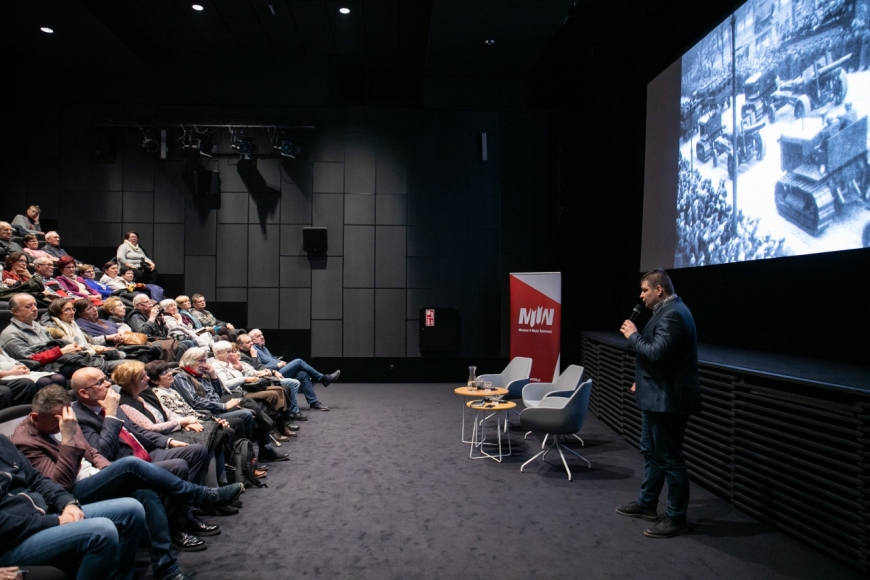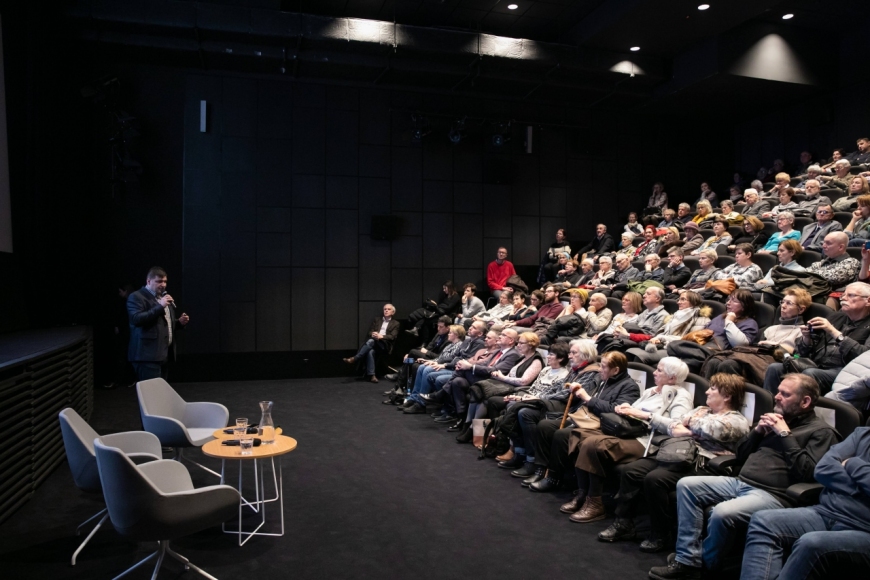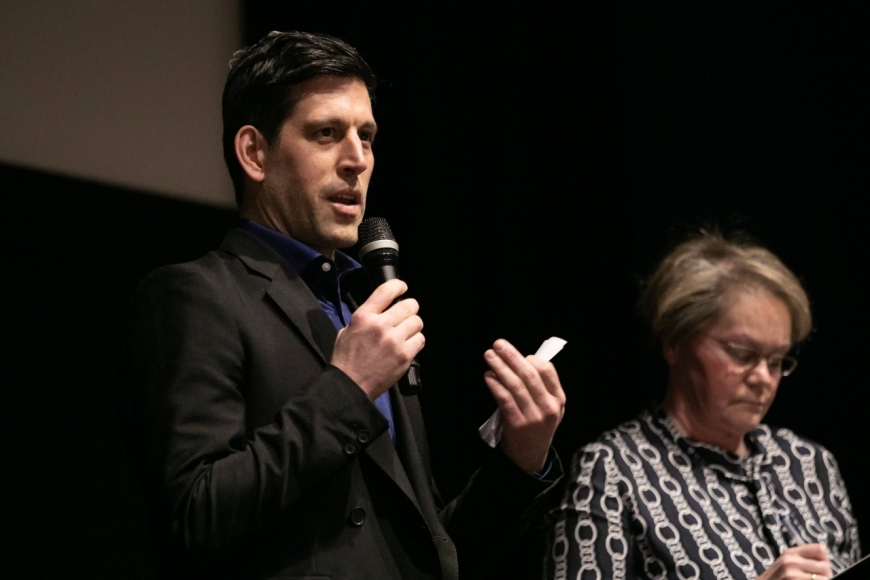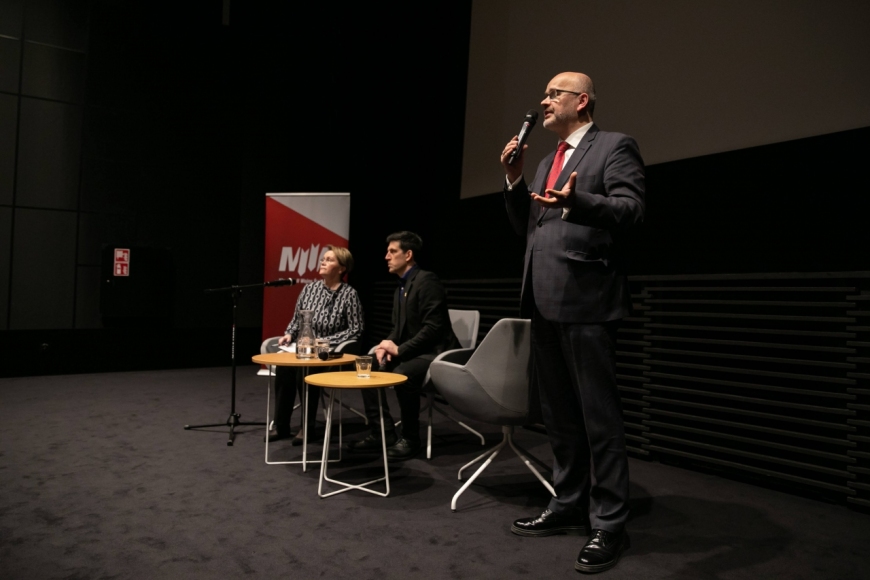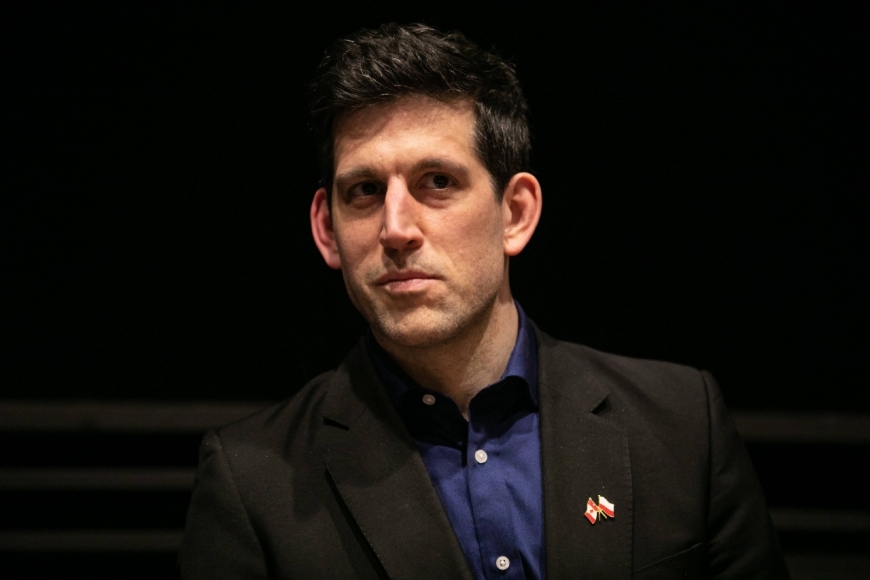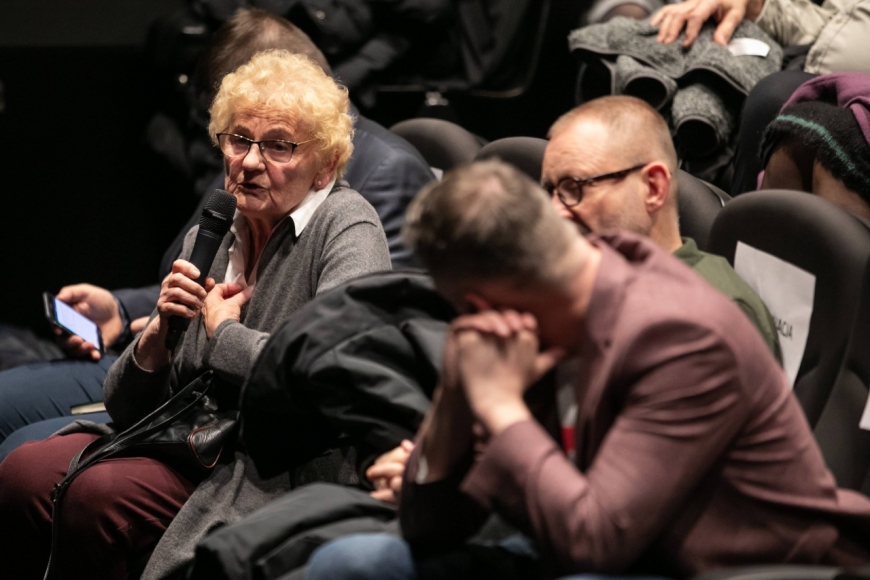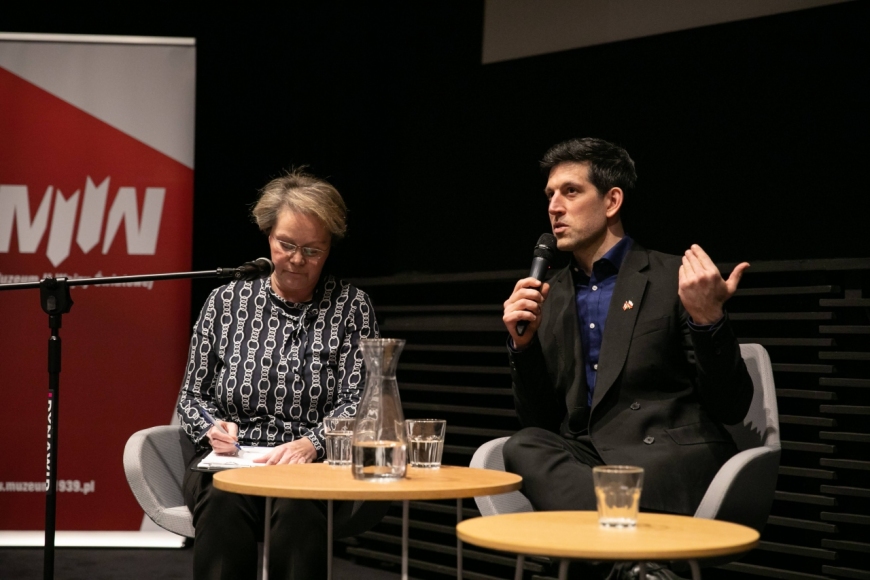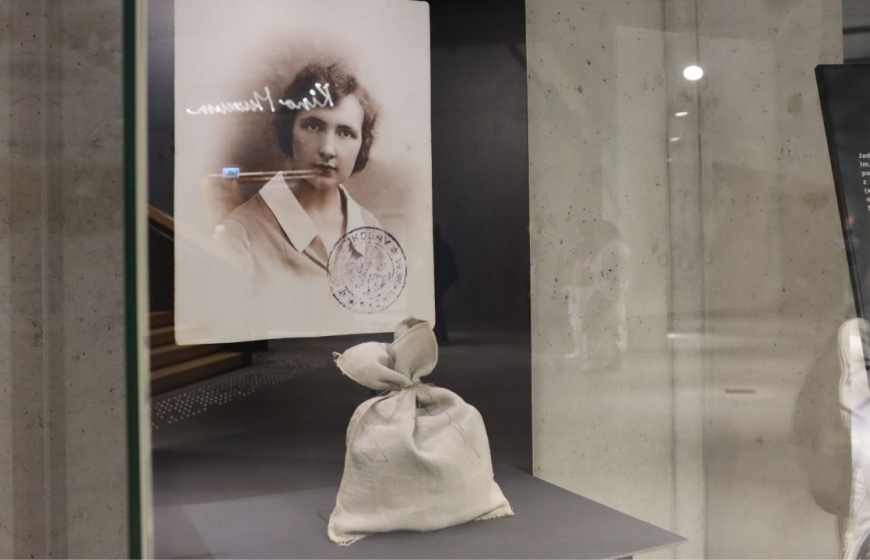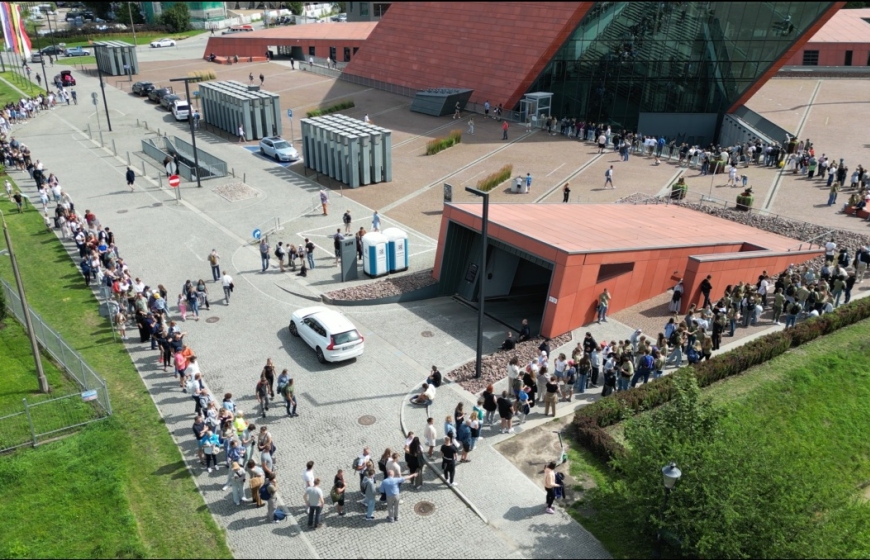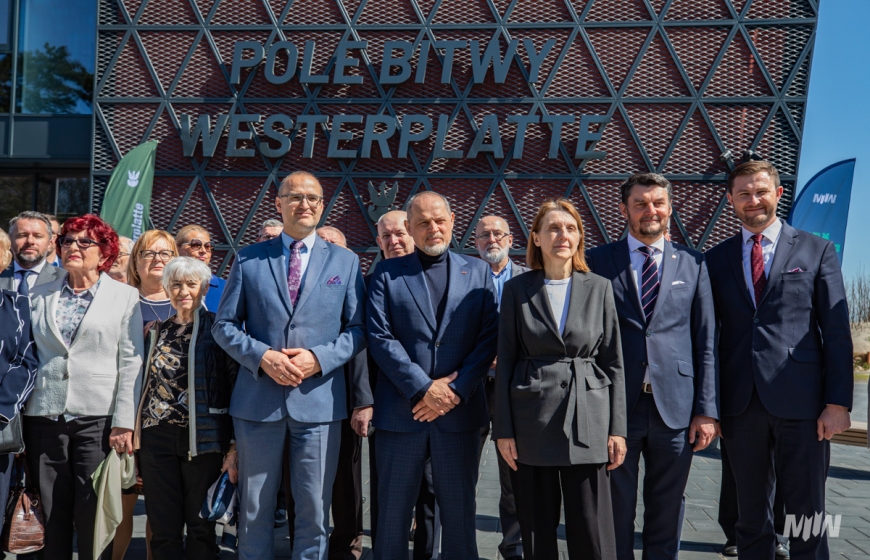Screening of the documentary “Memory Is Our homeland”
The Museum of the Second World War in Gdańsk hosted a screening of the documentary “Memory Is Our homeland” [Polish:Pamięć jest naszą ojczyzną] attended by the director, Jonathan Durand. The documentary tells the story of thousands of Polish women and children, who after having escaped Soviet labour camps, sought refuge in Africa.
On the night of 9 -10 February 1940, in the territories of the Second Polish Republic under Soviet occupation, began the first of the four mass deportations of Poles to the East began, which were conducted by the NKVD over the period of 1940-1941. The victims were primarily families of the Polish army settlers in the Kresy Wschodnie (the name for the Eastern Borderlands areas), as well as government, forestry and railway employees. In the eyes of the Soviet authorities they were “the uncertain factor”, a threat to the ‘sovietization’ of the occupied territories.
In his speech to welcome the numerous guests who attended the screening, Professor Grzegorz Berendt, the Deputy Director of the Museum of the Second World War in Gdańsk, reminded the audience that the deportations were the consequence of the Molotov–Ribbentrop Pact, signed on August 23, 1939.
The mass deportations of 1940-1941 were an intergral component of the policy put into effect by both occupying powers. In the autumn of 1939 the Nazi authorities began transporting those who were expelled from the territories annexed by the Third Reich, and several hundred thousand people were deported to the General Governorate. The Soviets started the process of "de-Polonization” , which featured expulsions, after February 10,1940, but this period did not bring to an end the time when hundreds of thousands of Polish citizen were chased out of their homes and condemned to transit under horrific conditions, which often killed them before they even reached their destination.
The living hell, experienced by the Poles residing in the Soviet occupied Kresy Wschodnie territories, lasted until June 1941. Historians estimated that during the re-settlement campaign, at least several hundred thousand of Poles were deported into the interior of the USSR. Prof.Grzegorz Berendt draws attention to the fact that:
The persecutions and deportations which commenced already in 1939, would last right until the end in their many subsequent permutations, and the return of the Soviets into the Eastern provinces of Poland after January 4, 1944, essentially marked the beginning of a new wave of ethnic cleansing. Miraculously spared from previous arrests and mass exterminations, the Polish elites were again being eliminated by the NKVD. Those who fell under the definition of posing a threat to Soviet interests, were again being deported eastwards.
Prior to the screening a minute of silence was observed in memory of those who lost their lives in transport and in the ‘inhuman land’.
During the meeting, Dr Dmitriy Panto, a member of the research team at the Research Department of the Museum of the Second World War, gave a presentation on the Soviet deportations of Poles carried out in the period 1940-1941.
Prior to the screening of “Memory Is Our homeland” there was the premiere of a short documentary prepared by the Film Documentation Department at the Museum of the Second World War in Gdańsk, entitled: “Children of Soviet Deportations”. It is a moving film etiude telling the story of mass deportations into the interior of the Soviet Union and a subsequent escape from the camps to Africa, as seen through the eyes of the children.
Years later, Jolanta Jarmołowicz, who attended the screening, and who was only a very young child at the time, still remembers the brutal deportation, with visible emotion:
Several of them barged in...they behaved like thugs. They lined up my mom, grandma, and nanny against the wall. They started searching and tossing everything out. They told us that we are leaving, that we are going to live somewhere else. It was February 10, the first deportation.
On 22 June, 1941 Germany, which was up until then an ally of the USSR, terminated the non-agrression pact with Stalin and invaded the Soviet Union. The Soviet authorities agreed to a treaty with the Polish Government-in-exile and in London on 30 July 1941, the Sikorski–Mayski Agreement was signed. One of its terms was an amnesty to Polish citizens who found themselves under the Soviet occupation after September 1939. Pursuant to an agreement was also the decision to form a Polish Army in the USSR, led by General Władysław Anders, who had been freed from a Moscow prison. The centers located in the USSR, where the Polish military forces were being formed, drew many Polish Army soldiers who were freed from prisons and camps, as well as many civilians: women, children and the elderly. General Anders ordered that all those who applied should be accepted.
It is the experience of the youngest deportations victims that is re-told in the documentary “Memory Is Our homeland” [Polish:Pamięć jest naszą ojczyzną] directed by Jonathan Durand.
The director based his narrative on the recollections of his grandmother, Kazimiera née Gerech, born in Osada Ostrówka in Polesie. In 1940 she was deported with her family to Siberia, and later, with the Anders Army she travelled to Africa.
I was growing up in Canada, and my grandmother in Montreal was one the family members who helped to raise me - she was a Polish refugee who spent her youth in Africa - Jonathan Durand said in the opening of his introduction.
Apart from his grandmother’s account, the author’s sources include other witness accounts relating to his family’s wartime history, which took him ten years to collect. In the film, we accompany Mr Durand to where once stood the buildings of the former Osada Ostrówek once stood, and to the Gerach smallholding - a site which today is a thickly forested area of Belarus. The director collected accounts from the several residents of this area who are still alive today, living in what used to be part of pre-war Poland. Durand also takes his audience to Tanzania, where in 1942 a Polish refugee camp was established. Of great significance was the invaluable discovery of a film documenting the daily life in the camp at Tengeru, which has never been screened before. It was this recording that helped the director to locate his grandmother.
In the period 1942-1952 more than 18,000 of Polish women and children lived in Africa as refugees. Following relase from Soviet capitivity many people travelled thousands of kilometres in order to find a peaceful harbour in the villages of East Africa.
His work on the documentary “Memory Is Our homeland” gave the director an opportunity to find his identity and reconstruct his personal history:
This film is a consequence of a crisis of a certain kind, as well an experience of internal contradictions. While I was growing up, the things I heard at school about Word War II and the course it took, clashed with what I heard from my grandmother. I attempted to answer two questions: how did it happen that tens of thousands of Poles found themeselves living in Africa, and secondly, what were the factors that led to some of this history being erased from memory - concluded Durand.
Jonathan Durand completed his degree in Political Studies and Philosophy at McGill University in Montreal. Following the completion of his studies he worked for several years as an educator and community development worker in Canada, South Africa and Mozambique. He was involved in work on his first feature film “Memory Is Our Homeland” from 2009, completing it in 2018. His film has been produced with the financial support from the Polish Embassy in Ottawa. To date the documentary has been screened at several film festivals, including the Kraków Film Festival in 2019.












